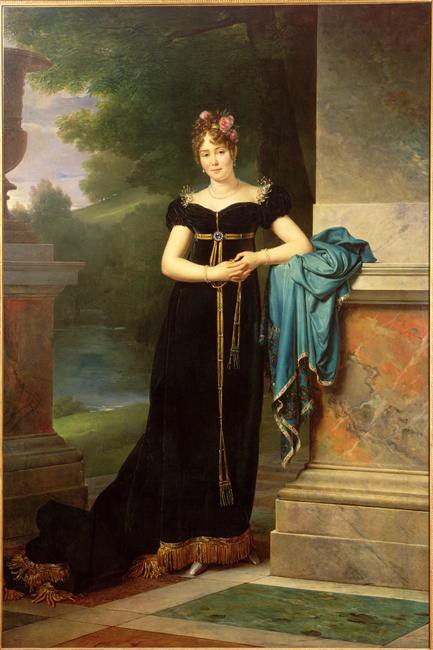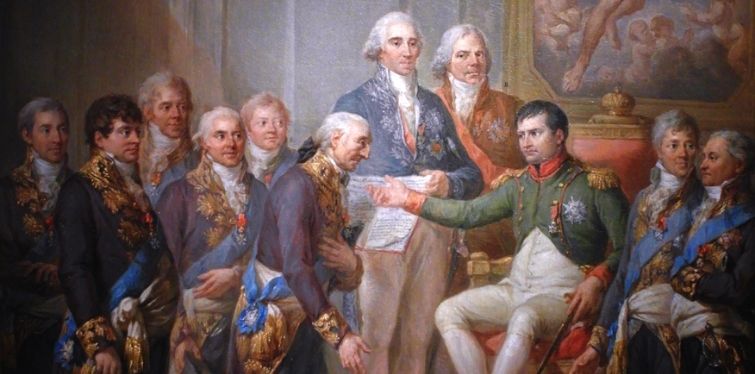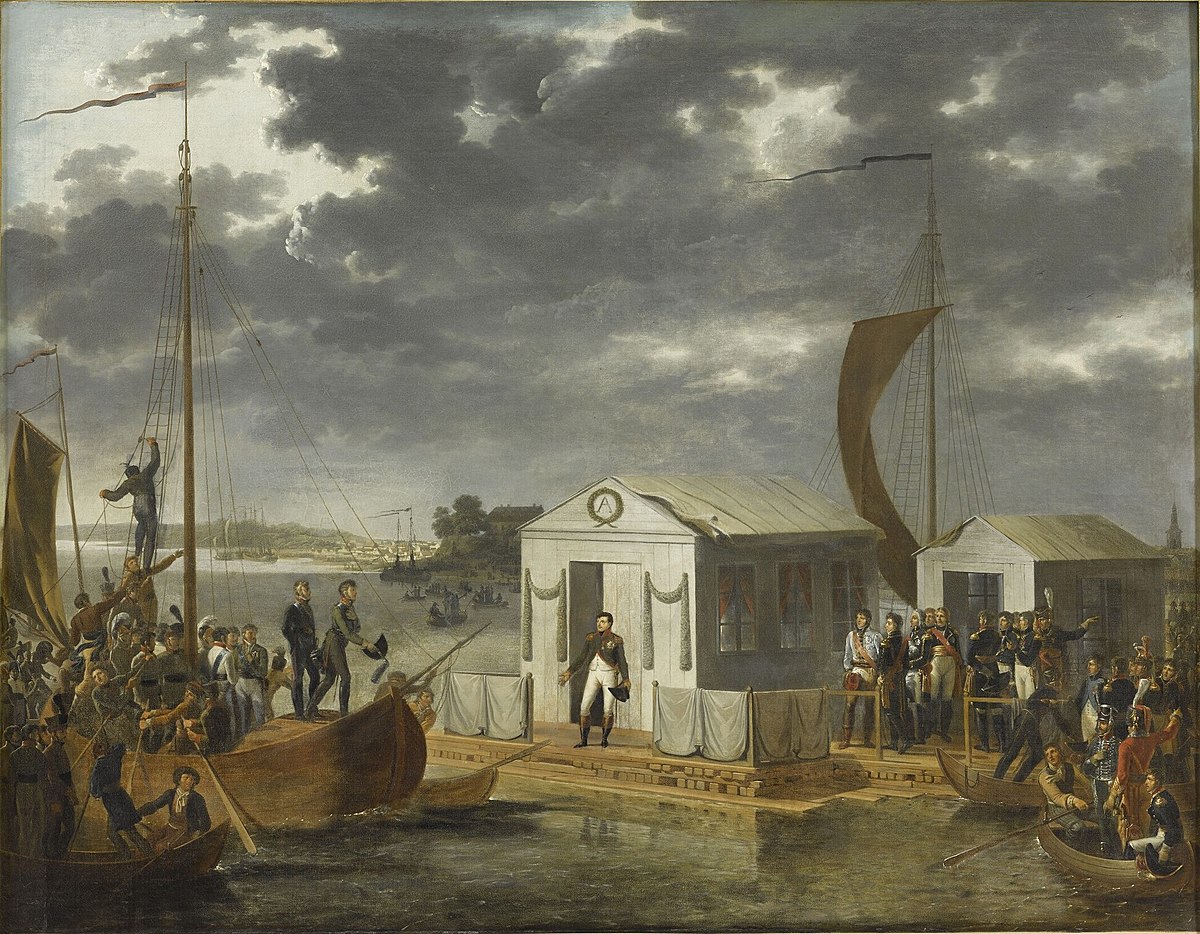This is the fourth part of a blog series looking into the experience of Poland during the Revolutionary and Napoleonic Wars. The previous part covered the Russian efforts to re-establish Poland developed by Prince Adam Czartoryski and supported by Tsar Alexander I. This post returns to Napoleon and his plans for Poland in 1806-07.
As mentioned in the previous post, Prussia struggled to maintain its neutrality over the course of 1806. The Prussian court was constantly playing Napoleon and the Coalition (Russia and Great Britain) against each other in order to get the best deal. Eventually, Napoleon ran out of patience and began to make preparations for war against Prussia. He saw an opportunity to destabilise Prussia by encouraging Polish troops in Prussian service to desert, sending emissaries to Prussia’s Polish provinces to ascertain their loyalties.
Napoleon’s representatives were greeted with an enthusiastic reception. On 20 September, Napoleon ordered the creation of the Northern Legion of 5,000 men under General Józef Zajączek, who had been in French service since 1797. The name of the unit reflected Napoleon’s reluctance to commit to the cause of Polish nationhood. The unit was open to other nationalities, although most of the ranks were Poles. These efforts were so successful that a couple of days later, a Second Legion of another 5,000 men was formed. Meanwhile, Napoleon had also summoned Dąbrowski to his side in the hope of rallying further support among the Poles.
Józef Zajączek
By this point preparations for war were well advanced on both sides. The hostilities began on 9 October as the Prussians marched into the territory of their ally Saxony in an effort to preempt a French invasion. Less than a week later, the two main Prussian armies were destroyed at the battles of Jena and Auerstedt on 14 October. Rather than come to terms, King Frederick William III of Prussia opted to withdraw his court and the remainder of his army to East Prussia, where they could be supported by his Russian allies. This left the door open for Napoleon to occupy most of the Kingdom of Prussia.
Napoleon was already in Berlin by the time Dąbrowski arrived. The two men discussed the formation of an army of 40,000 Poles. The Polish general urged Napoleon to proclaim the restoration of the Kingdom of Poland, including all of the territories of the former Commonwealth. Napoleon could not give this undertaking since it would alienate Austria, with whom he had made peace the previous year, and Russia, with whom he hoped to make a separate peace to isolate Prussia. In response to the pleas for Polish nationhood, Napoleon answered, “I shall see whether the Poles are worthy to be a nation.”
In November, Dąbrowski and Wybicki entered Poznań and were welcomed enthusiastically by the local population. On 4 November, Dąbrowski issued a decree written by Wybicki ordering 1 infantry recruit from 10 households, 1 cavalry recruit from 45 households, and 1 light infantry recruit from every estate. The manifesto quoted Napoleon’s words about the worthiness of the Poles, encouraging patriots to join the ranks of the new Polish army. The Greater Poland Uprising had begun, with the Polish ranks swelling and undermining the civil and military administration of the Prussian state. By January 1807 the province was effectively under Polish control, and Dąbrowski’s Polish army numbered more than 20,000 men.
Dąbrowski's entry into Poznań
On 19 November, Napoleon received a deputation from Poznań and encouraged their hopes by stating that France had never recognised the partitions of Poland. A few days later, upon receiving news that the Russian army had withdrawn from Warsaw, the Emperor left the Prussian capital for Poland. Marshal Murat’s advance guard had arrived in Warsaw on 28 November and were met with popular demonstrations of support. Murat forwarded to Napoleon a petition from Polish nobles suggesting that the Polish nation be reconstituted with a French commander as the new king. As Napoleon’s brother-in-law, Murat had aspirations of becoming King of Poland himself.
Napoleon himself did not arrive in Warsaw until the end of December. En route, he made the acquaintance of Countess Marie Walewska, a Polish noblewoman who desired to meet the man whom she hoped would be the liberator of her nation. In January the pair would be reacquainted in Warsaw, and Napoleon would take the Polish countess as his mistress. Walewska urged Napoleon to restore the Polish state as it was before the partitions. Napoleon was not a man who placed the affairs of his heart over the affairs of state. Even so, the affair would last more than three years. In 1810 Walewska would give birth to a son Alexandre, who would go on to serve as Minister of War in his cousin Napoleon III’s government.

Marie Walewska
On 14 January, a provisional government was created in Poland to administer the Polish territories conquered from Prussia. The members of the governmental commission were largely drawn from the liberal nobility, including several men who had supported the Constitution of 3 May 1791. The President of the body was Stanislaw Małachowski, who had been the Marshal of the Four Year Sejm. In addition to the commission, five ministries (War, Interior, Finance, Police and Justice) were created. General Józef Poniatowski was named Minister of War and commander-in-chief. This marked the beginning of Poniatowski’s ascendancy over Dąbrowski as the senior Polish commander under Napoleon. Despite all his previous efforts organising his fellow countrymen to fight under Napoleon, Dąbrowski was overlooked. He was disheartened by these developments, but continued to serve under Poniatowski’s overall command.
The Polish units were reorganised into three divisions: The Poznań Division under Dąbrowski, the Kalisz Division under Zajączek, and the Warsaw Division under Poniatowski. Meanwhile, the remnants of the Polish troops which had formed Dąbrowski and Kniaziewicz’s legions in Italy and Germany had arrived in Silesia in February 1807. They had been ordered to join the army at the end of 1806 and were re-organised into the Polish-Italian Legion, so-called because these Poles had fought in Italy. The unit did not see much action until late in the campaign.
The Polish divisions would largely play a subordinate albeit crucial role in Napoleon’s ensuing campaign against the Russian army, which Napoleon called the Polish War. The Kalisz Division joined the siege of Grudziądz in eastern Pomerania while the Warsaw Division moved with the French army towards Danzig (Gdansk). Dąbrowski’s Poznań Division advanced on Gniezno and Dirschau (Tczew) on the Vistula. The town changed hands between the Poles and the Prussians on several occasions. On 23 February the Poles successfully captured and held on to Tczew, but Dąbrowski was wounded. He relinquished command to Michał Sokolnicki, who took part in the Siege of Danzig, which fell at the end of May. By besieging the Prussian garrisons, they were preventing from joining the remnants of the Prussian field army which had united with the Russians.
By this time Napoleon had fought Bennigsen’s Russian army to a bloody standstill at the Battle of Eylau on 7-8 February. By the end of May he was ready to make another attempt to march on Königsberg. At the Battle of Friedland on 14 June, Napoleon inflicted a major defeat on the Russians. 5,000 men of Dąbrowski’s Division fought at Friedland as part of Marshal Mortier’s VIII Corps, which arrived on the left flank to support Marshal Lannes, who had been desperately defending the position since the beginning of the Battle.
Napoleon and Alexander at Tilsit
Napoleon’s victory at Friedland prompted Tsar Alexander to sue for peace. In June 1807 the two emperors met at Tilsit on the River Niemen. The fate of Poland was a major item on their agenda. While Napoleon intended to punish Prussia, he aimed for an alliance with Russia to secure his eastern flank. In the Treaties of Tilsit signed on 7 July and 9 July with Russia and Prussia respectively, Napoleon deprived of Prussia of half her population. On 22 July, he proclaimed the Duchy of Warsaw, a nominally independent state measuring 104,000 km². It was formed out of the land which Prussia had acquired during the second and third partitions, with the exception Białystok, which was transferred to Russia, and Danzig, which was made a free city. This left the Duchy of Warsaw landlocked, with no access to Baltic commerce.
Thus, in spite of Napoleon’s appeals to Polish patriotic sentiment, this new Polish state did not mention Poland by name. Its constitution was based not on the Constitution of 1791 but on the French model, and the Napoleonic Code was adopted the following year. Moreover, its head of state was not to be a Pole, but rather the King of Saxony, Frederick Augustus - who had switched sides after Jena-Auerstedt. While Frederick Augustus himself had initially been named as the successor to King Stanislaw Augustus in the Constitution of 1791 and his predecessors had once sat on the Polish throne, the Polish patriots naturally would have preferred a Polish head of state.

Frederick Augustus I of Saxony
Saxony was a member of the Confederation of the Rhine, the political organisation of German states Napoleon set up in 1806 following the dissolution of the Holy Roman Empire. Moreover, Frederick Augustus spent most of his time in his Saxon capital of Dresden. Both these factors meant that French officials in Warsaw were calling most of the shots. Marshal Davout was named Governor-General of the Duchy and effectively served as commander of the army in Poland, though Prince Poniatowski continued to be Minister of War. Thus, French influence in the Duchy of Warsaw was even greater than Russian influence in Poland during the reign of King Stanislaw Augustus.
For ordinary Poles, the political reality was relatively unchanged. Although the constitution had abolished serfdom, the land remained the property of the nobility. Peasants therefore remained dependent on their landlords and the nobility preserved their dominant position. The adoption of the Napoleonic Code counterintuitively strengthened the aristocracy, as the rural poor had fewer rights than they had under feudal traditions. While the new constitution was largely favourable to city-dwellers, the Jewish population (28% of the urban population) were not granted the same rights. They were also significant restrictions on where Jews could live. While Jews were allowed to be exempt from military service, they would have to pay a large tax for the privilege.
Meanwhile, the Duchy’s economic picture was mixed. The Continental Blockade with Britain closed the traditional market for wheat, Poland’s primary export. In order to support the military apparatus and no longer able to access British imports, the domestic production of cloth, iron, and steel increased significantly. Even so, the Duchy’s economy had difficulty sustaining the 30,000 man army, which would increase threefold over the next five years. In order to alleviate the financial burden, in 1808 Napoleon agreed to take several Polish units into French pay to fight in Spain. These included the Polish-Italian Legion, which was renamed the Vistula Legion; and three of the best infantry regiments in the Duchy’s army. Napoleon also took with him a Polish Light Horse Regiment for his Imperial Guard.
Thus, even though the Duchy was a disappointment to liberal Polish patriots and changed little for the common folk, many still continued to see it as a stepping stone to full nationhood in the future. Through their actions on the battlefield, they continued to hope that Napoleon would eventually consider them deserving of nationhood. During the remainder of the Napoleonic era, Polish troops would fight for Napoleon across the whole continent from Madrid to Moscow.




Share and get 15% off!
Simply share this product on one of the following social networks and you will unlock 15% off!